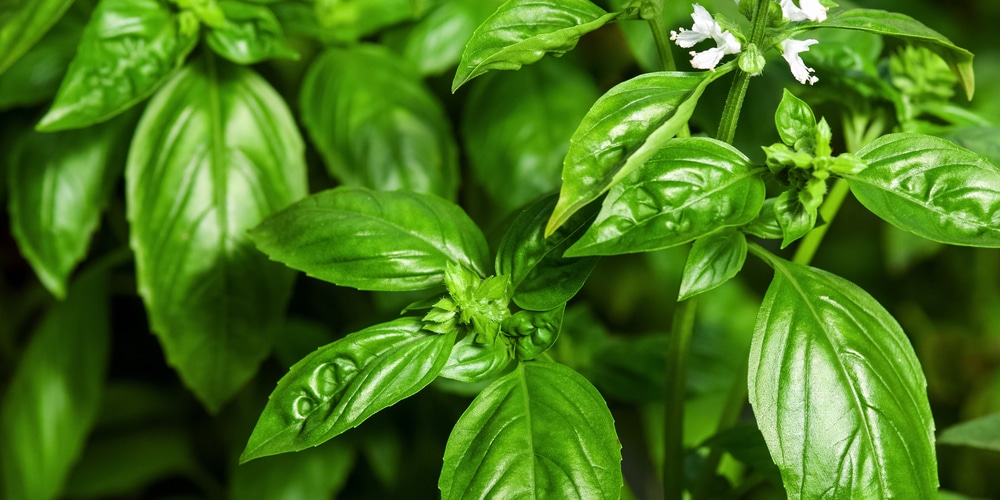Basil is a cheery and moisture-loving herb that can be grown with little to no trouble. It’s one of the easiest plants to care for and serves as the perfect starter for beginners. The next question, naturally, is ‘how to grow basil in Florida?’
As it stands, you won’t need to go out of your way to grow this sun-loving herb. Just make sure to protect it from the frost and keep it happy with regular watering.
How to Grow Basil in Florida

There are about a dozen or so varieties of basil, but it’s more or less divided into four types- dwarf green, scented leaf, sweet green, and purple leaf. These herbs vary in size and appearance as well, but almost all of them can be used in food dishes.
Regardless of type or characteristic, their growing requirements are the same. Basil plants love to have their roots consistently moist and enjoy a warm, bright environment. Plus, they’re versatile and tolerant enough to be put in containers, beds, and on the ground.
It’s worthy to note that basil is considered an annual herb in Florida, but some may exhibit perennial characteristics. They don’t like frost and their leaves will turn brown and fall quickly if the environment is cold. Gardeners can protect their plants by bringing them in come wintertime or by putting a cover to ward off the cold.
Even as an annual, it’s easy to propagate Basil plants when it’s nearing the end of their life cycle so you can continue growing them.
It’s recommended that you start planting Basil once the danger of frost has passed. You can start earlier but it has to be indoors and with supplemental lighting. Pick a spot that gets plenty of morning sunlight and well-draining soil that has plenty of organic material.
If starting from seed, make sure to thin them and keep a distance of 10-12 inches apart. As a rule of thumb, larger basil varieties require more space. Water them in after transplanting and wait for the herb to sprout three sets of leaves. Pinch the tip to encourage a bushy appearance, and remove about an inch of flower (including the stem) to keep the leaves viable.
Basil plants are usually fine without fertilizer, but they do benefit from a small dose of balanced phosphate, nitrogen, and potassium mix. You should keep a close eye on the soil- water immediately if the surface is dry.
Is Basil a Good Crop in Florida?

Basil is an excellent crop to grow in the state of Florida. It loves warm and humid weather, something that Florida has in spades. It also prefers a sunny location but can grow reasonably well in shade. Be careful though, too much shade and your basil will bolt.
Make sure to fulfill its growth requirements, which include 6 to 8 hours of sunlight and constant watering. Soil should be well-draining and free from insecticides and away from busy streets and driveways.
Basil is quite susceptible to aphids, powdery mildew, and fungal and bacterial diseases. Regularly check for telltale signs of infestation and act accordingly. Prevention is one of the best ways to avoid diseases, and thus it’s recommended that you observe proper spacing for optimal ventilation and try your best to water at the soil level. Wet foliage will invite mildew and other harmful bacteria.
Can You Grow Basil in Southern Florida?
Basil is among the easiest to grow herbs in South Florida, with rosemary, oregano, thyme, and mint.
If you find yourself losing basil plants because they scorch too easily, don’t give up. You can plant heat-tolerant species such as lemon basil, Thai basil, African blue basil, or pesto perpetuo basil and expect good results. These varieties can tolerate Florida’s full sun and hot summer seasons and produce a healthy amount of leaves for harvesting.
Remember the basic care for basil plants- full sunlight, consistently moist soil, and mulch for conserving water. It doesn’t want to be waterlogged, and as such, you’ll want to put it in a well-draining pot or garden bed.
How to grow basil in Florida?: Final thoughts
As long as you provide these conditions and check for pests and disease, your basil plants should have long and productive lives. To get them into a bushy state (which equals more leaves for cooking or garnish), prune and cut back regularly.